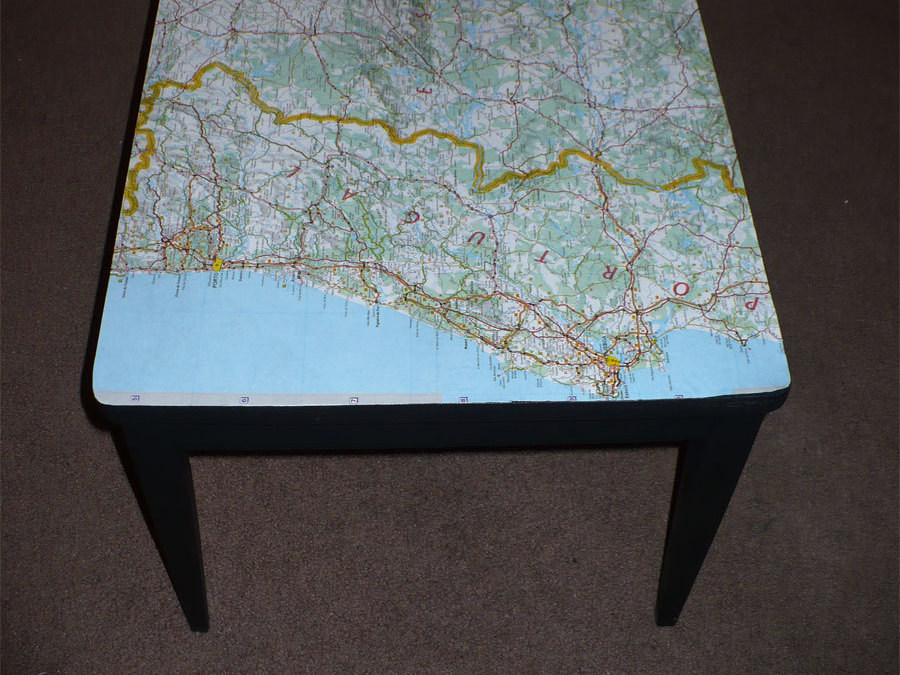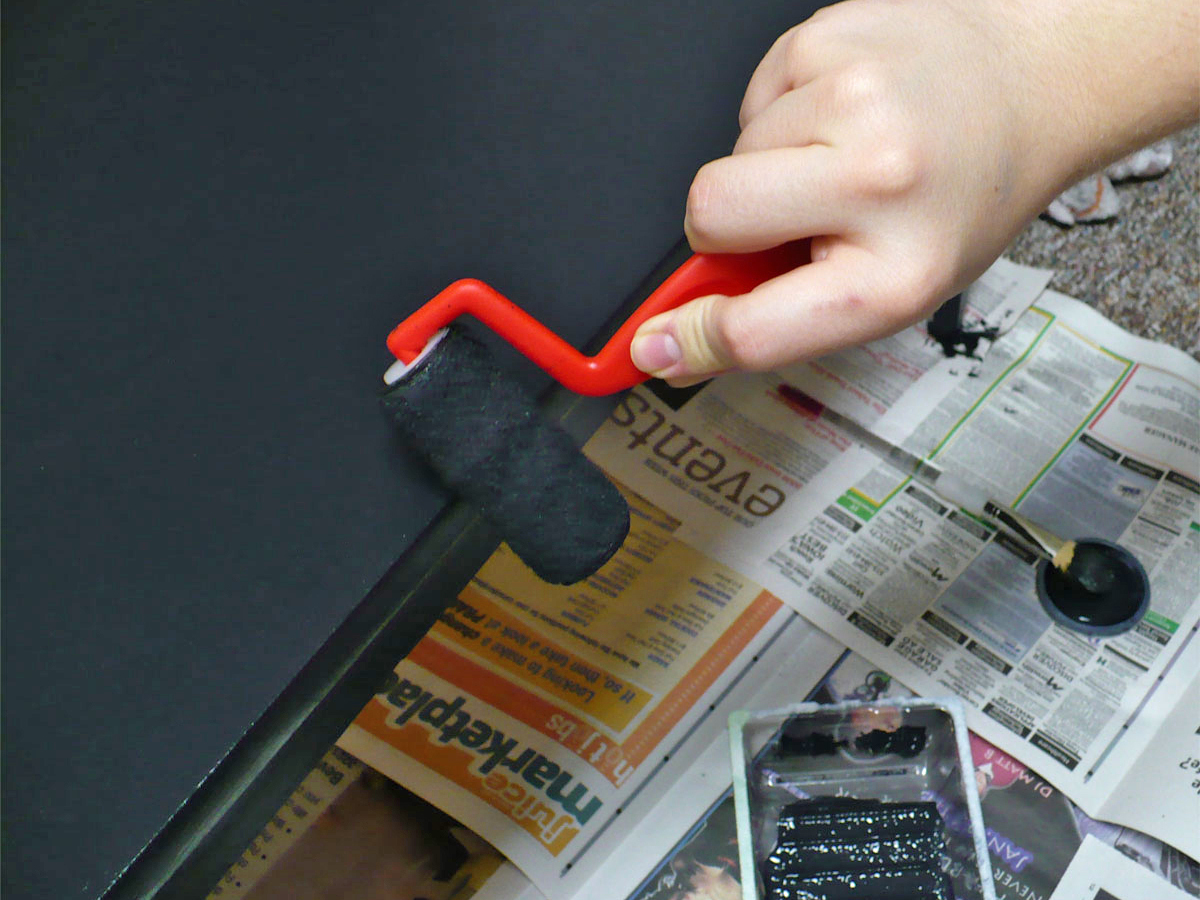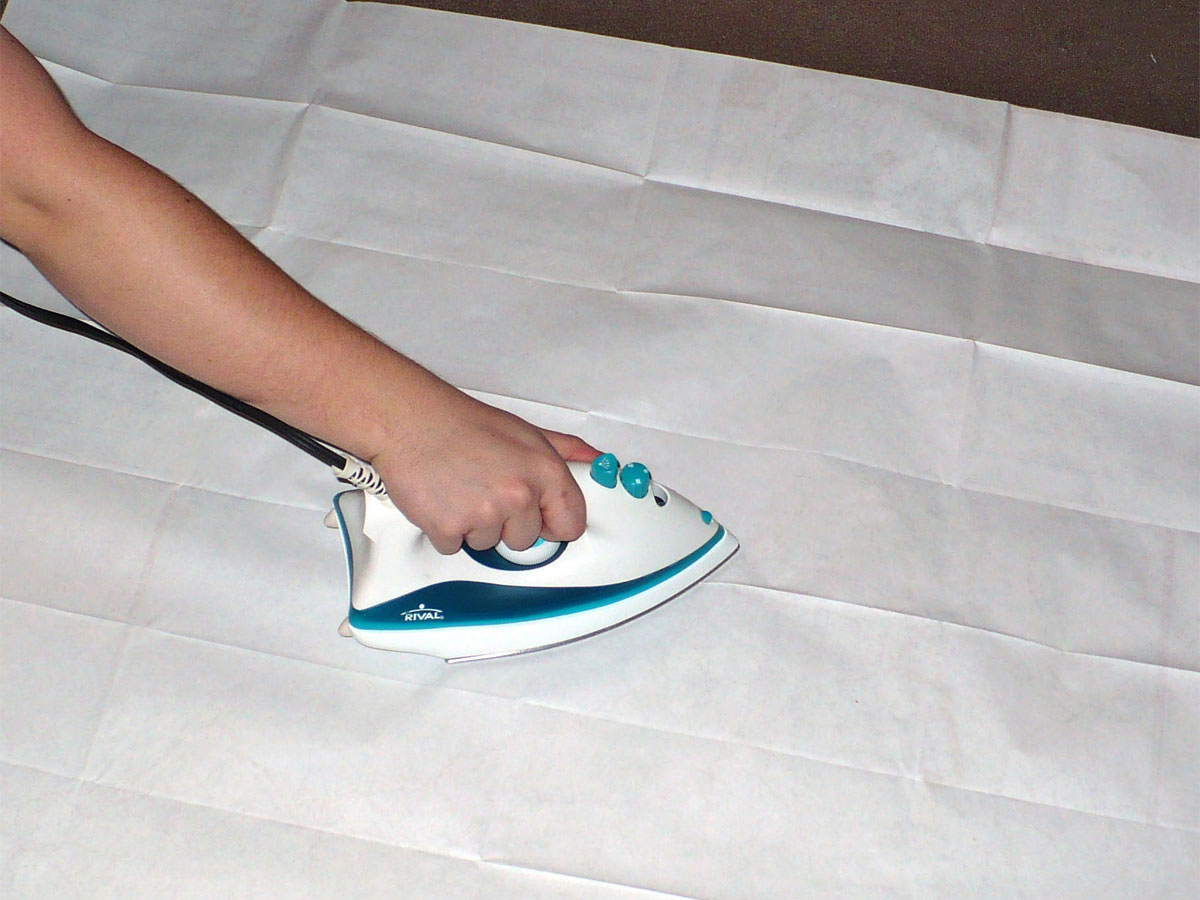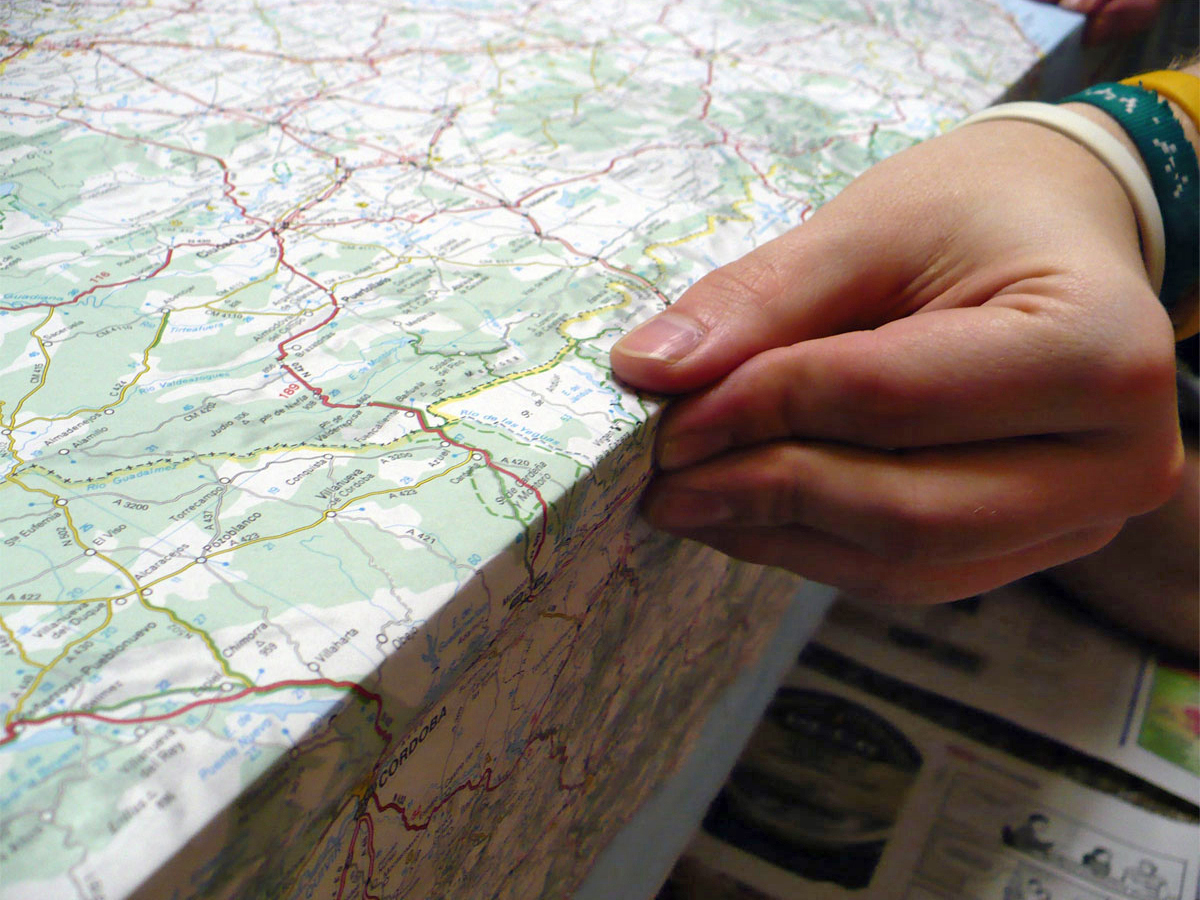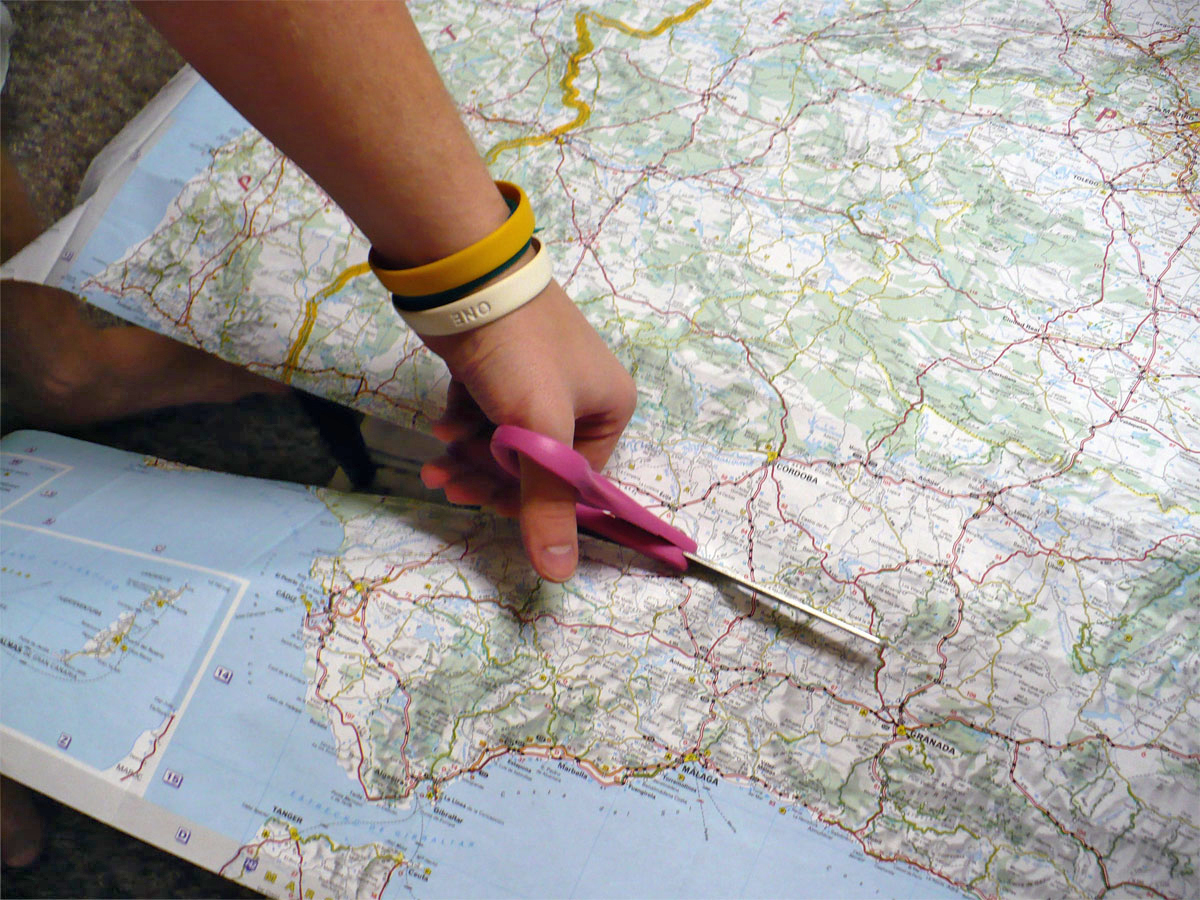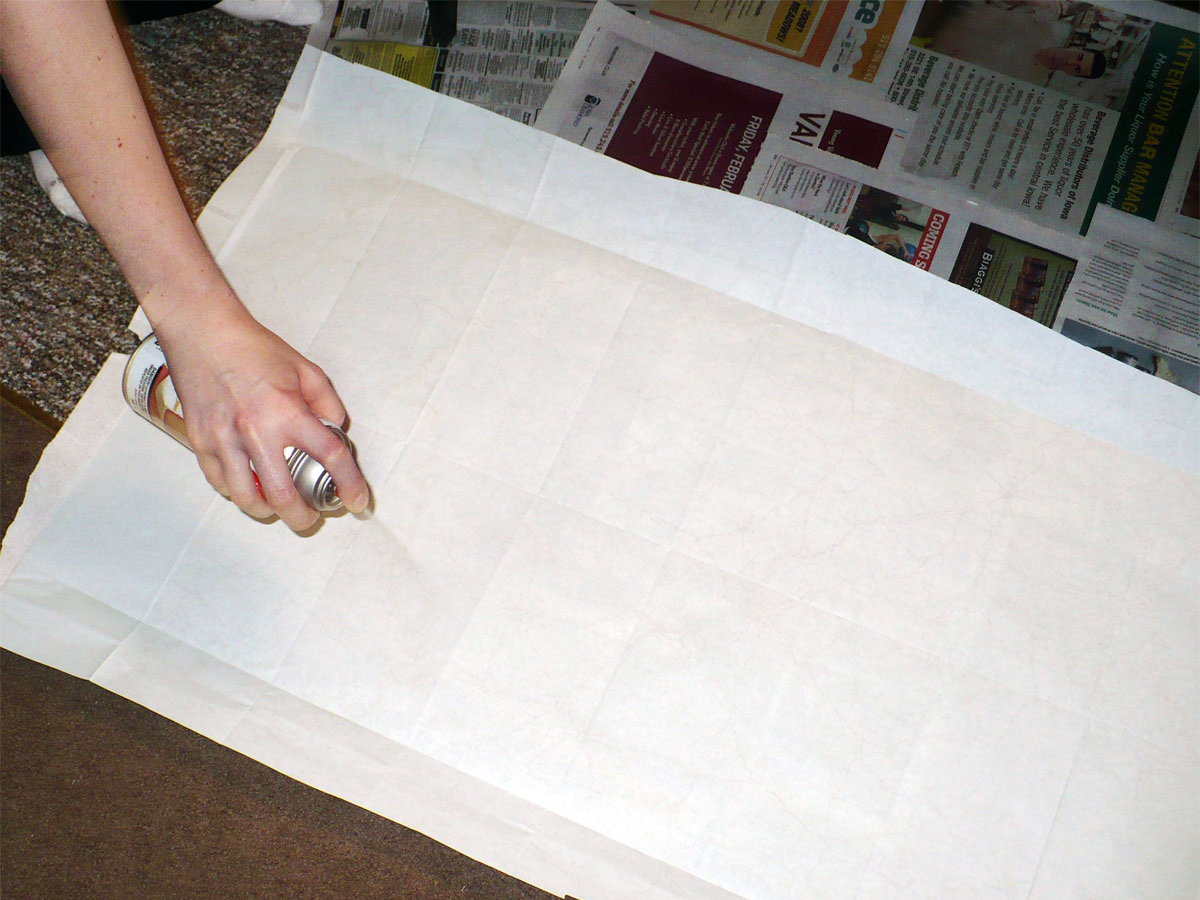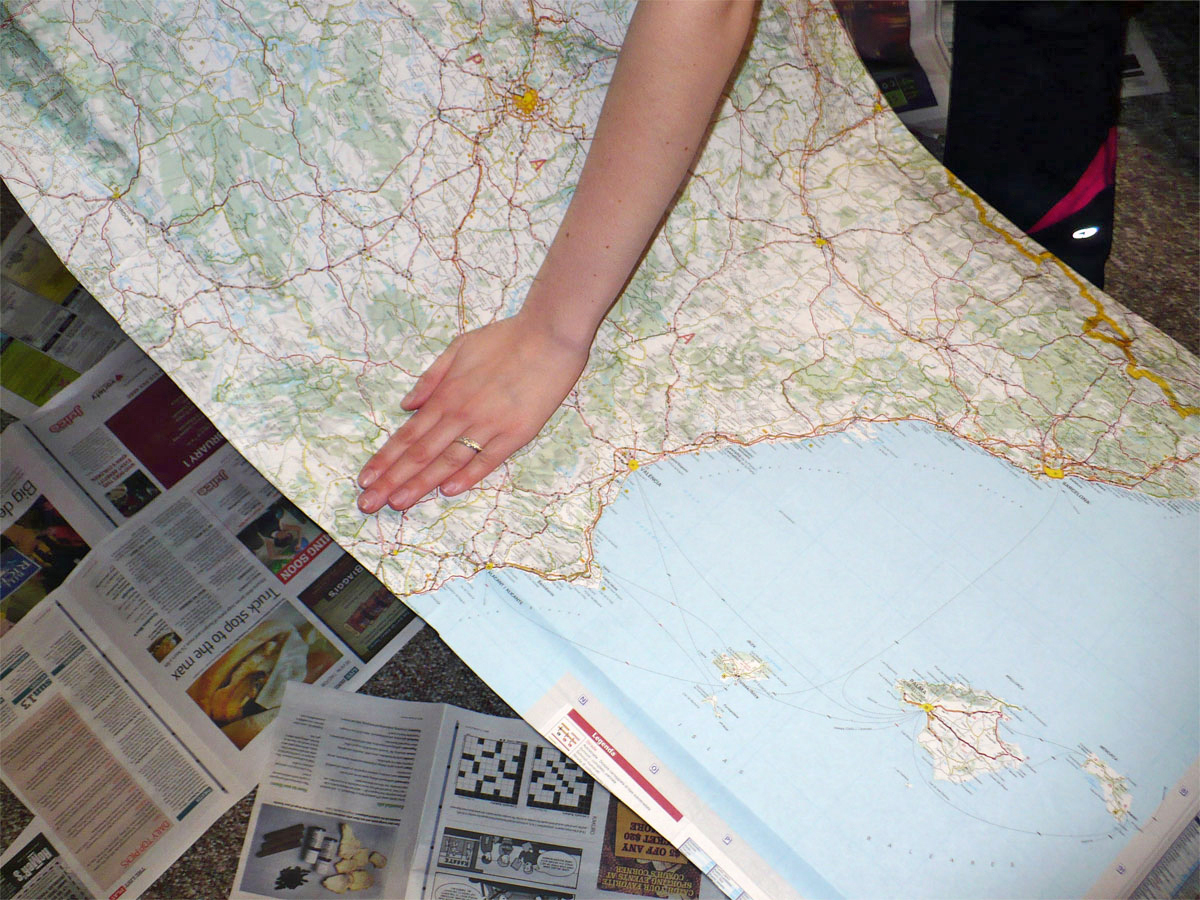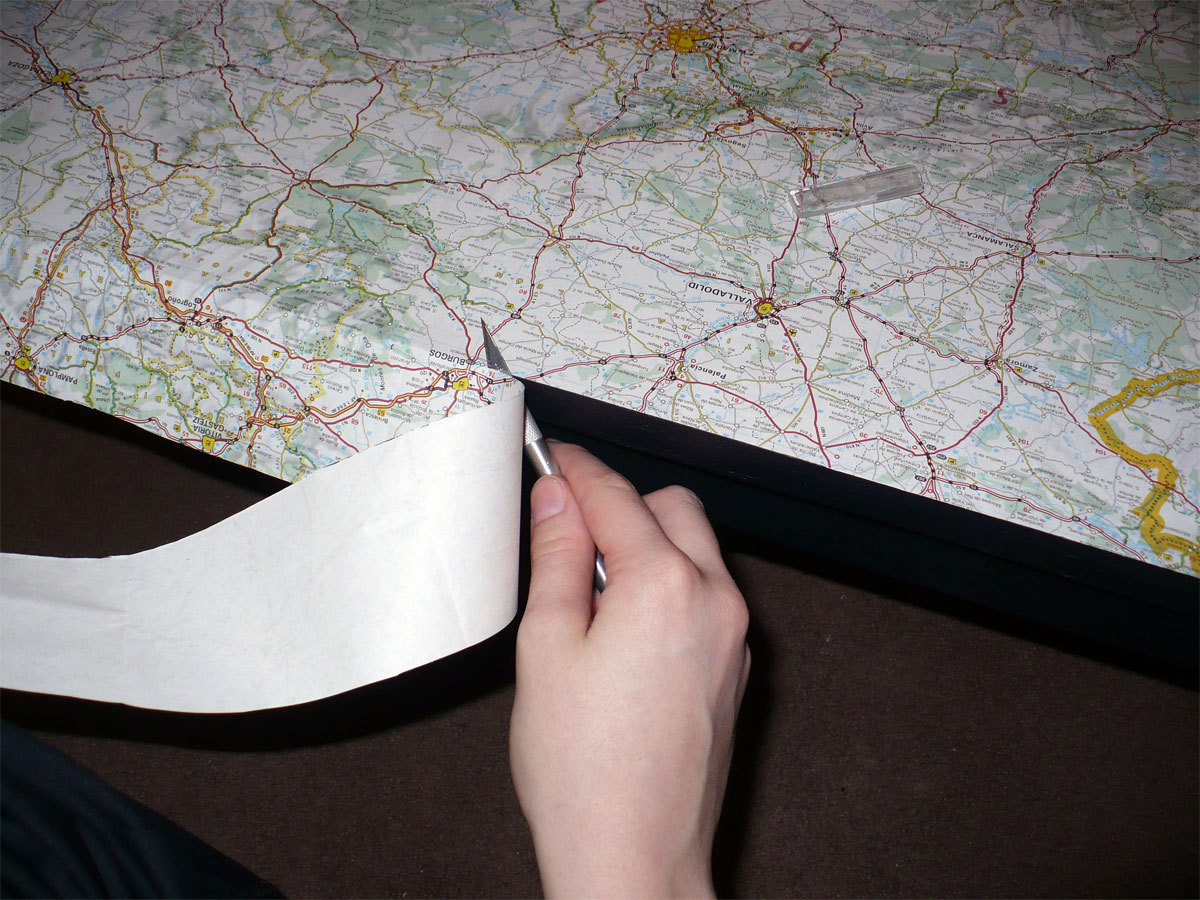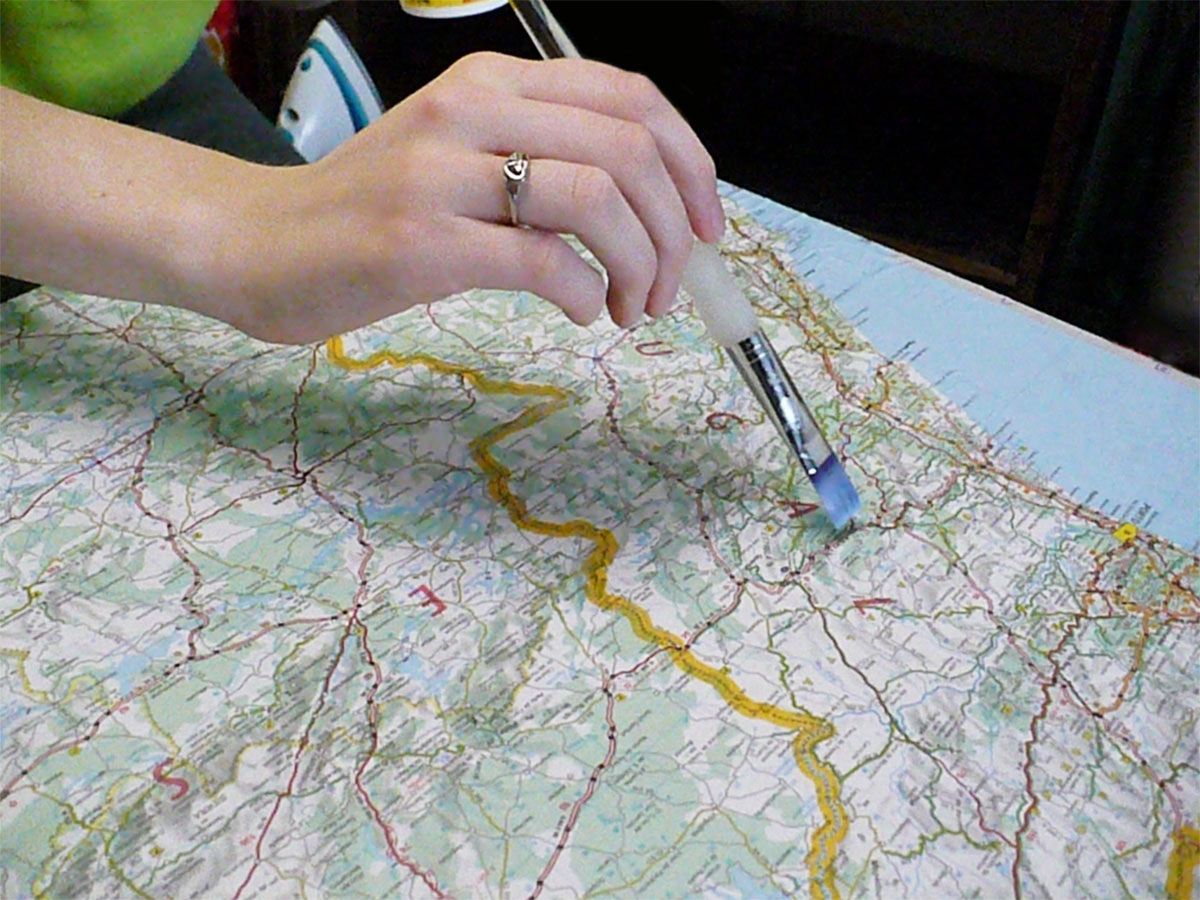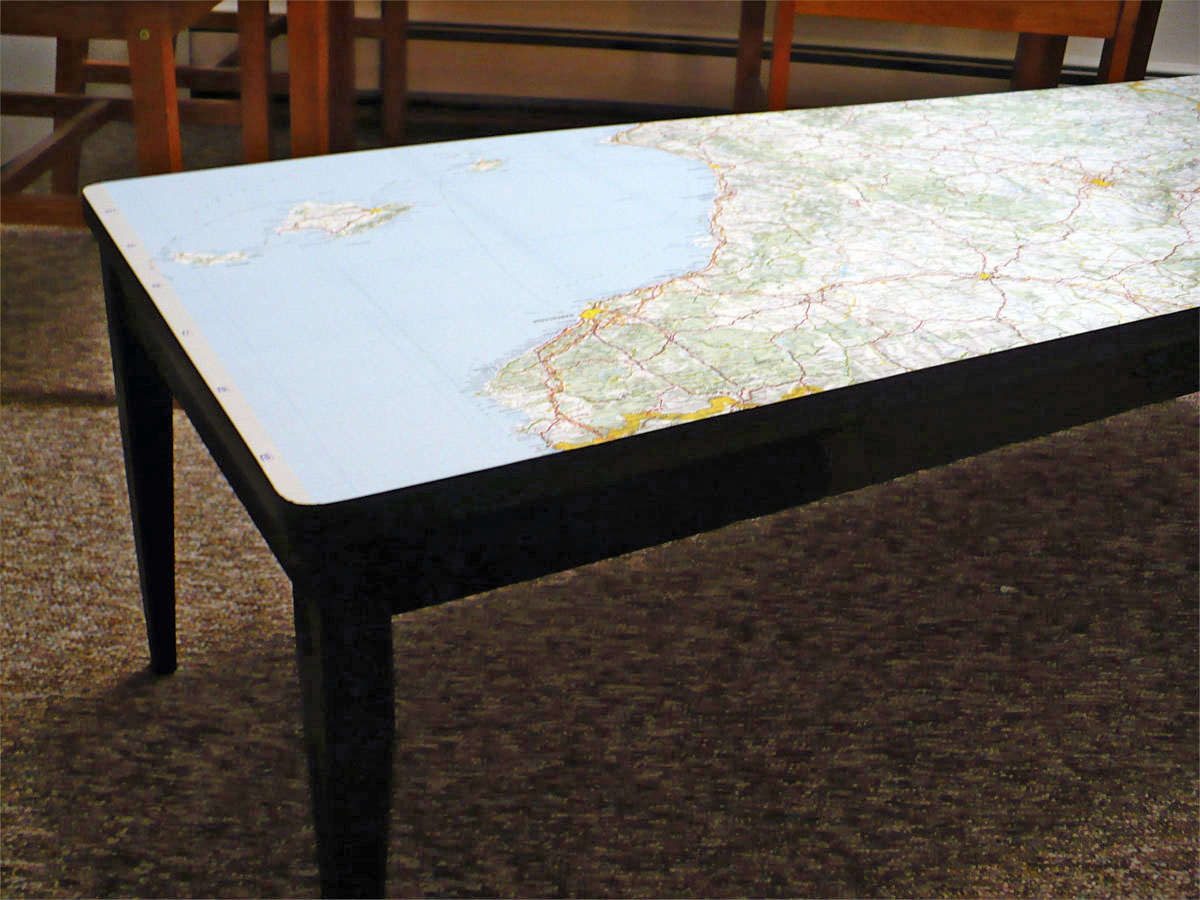Using scissors, make a cut from the edge of the map that leads up to 1 corner of the table.
Then use your hobby knife to cut off the excess map, making the edge of the map flush with the edge of the table. An easy way to do this is to place the edge of the blade along the edge of the table, then pull the blade along, lifting the cut-off paper as you go.
Clean off the tabletop with a dry rag. Working from one end of the table to the other, use a paintbrush to lay down a coat of Mod Podge.
If wrinkles form, many can be rubbed out with either your paintbrush or your fingers when the Mod Podge is almost dry, and most small wrinkles or bubbles will flatten out on their own as the glue continues to dry. Allow the Mod Podge to dry for at least 1 hour. It may still be tacky after it has dried, but this next step will eliminate that.
Wearing your face mask, use your paintbrush to generously coat the tabletop with Future acrylic floor finish.
A little goes a long way, so you won’t have to use very much. To make your table surface durable and waterproof, brush on 3 to 4 coats of the finish, allowing each coat to dry for 20 minutes.
Your table will sport a wonderful glossy finish. If wrinkles appear when you’re putting on the finish, don’t worry; they should disappear as the table dries.



